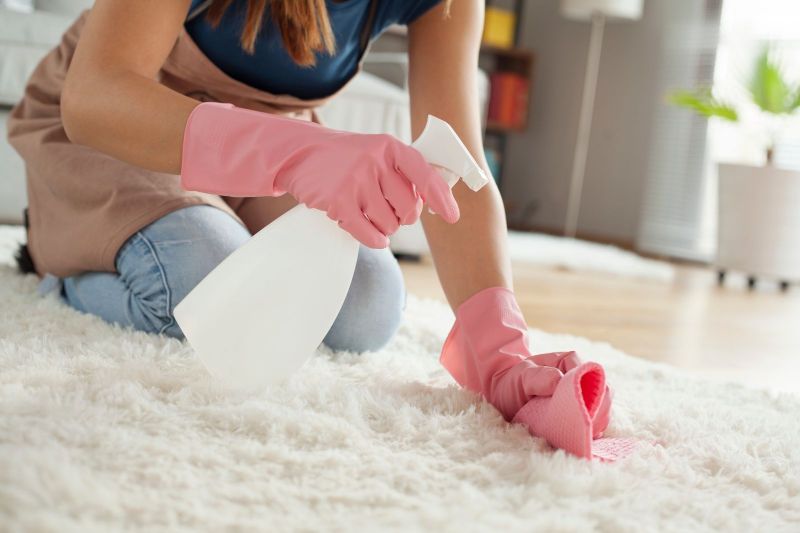Carpeted floors add warmth and comfort to any living space, but they can also be a breeding ground for allergens and dust mites. If you or your loved ones suffer from allergies or respiratory issues, maintaining a clean and dust-free environment becomes crucial. In this blog post, we will explore the importance of carpet cleaning for allergy relief and provide you with practical tips and strategies to create a healthier and more comfortable living space.
Understanding Allergens and Dust Mites
Allergens, such as dust mites, pet dander, pollen, and mold spores, are microscopic particles that can trigger allergic reactions in sensitive individuals. These allergens tend to accumulate in carpets over time, becoming a significant source of indoor allergens. Dust mites, in particular, thrive in warm and humid environments and feed on dead skin cells and other organic matter present in carpets. Their fecal matter and decomposing bodies contain allergenic proteins that can cause respiratory problems, sneezing, itching, and other allergic symptoms.
Regular Vacuuming
The first line of defense against allergens in carpets is regular vacuuming. Invest in a high-quality vacuum cleaner with a HEPA (High-Efficiency Particulate Air) filter, as it can effectively trap even the tiniest particles. Vacuum your carpets at least once a week, paying extra attention to high-traffic areas, corners, and crevices. Additionally, make sure to clean the vacuum's filter and dust bag regularly to maintain its efficiency.
Deep Cleaning
While regular vacuuming helps remove surface dust and allergens, it may not eliminate deeply embedded dirt and dust mites. Periodic deep cleaning of carpets is essential to achieve a truly dust-free environment. There are several methods for deep cleaning carpets, including steam cleaning, dry cleaning, and foam cleaning.
Steam cleaning, or hot water extraction, is a popular and effective method. It involves injecting hot water mixed with a cleaning solution into the carpet and then extracting it along with the loosened dirt and allergens. This process kills dust mites and removes their allergenic waste, providing a thorough and deep clean.
Dry cleaning uses specialized cleaning compounds or powders that are applied to the carpet and then vacuumed away. While it may not be as effective as steam cleaning for eliminating allergens, dry cleaning is a suitable option for carpets that cannot tolerate moisture.
Foam cleaning is another low-moisture method that involves applying a cleaning foam to the carpet, agitating it, and then vacuuming it away. This method is relatively quick and can help remove surface-level dirt and allergens.
Preventing Allergen Accumulation
In addition to regular vacuuming and deep cleaning, there are several preventive measures you can take to reduce allergen accumulation in your carpets. Consider implementing the following practices:
Establish a "no shoes" policy: Shoes can track in dirt, pollen, and other allergens from outside. Encourage family members and guests to remove their shoes at the door to minimize allergen entry.
Use doormats: Place doormats both outside and inside your entrances to trap dirt and allergens before they reach your carpets.
Regularly wash bedding and upholstery: Sheets, pillowcases, and upholstered furniture can harbor allergens. Wash them frequently in hot water to eliminate dust mites and allergens.
Control humidity levels: Dust mites thrive in humid environments. Use dehumidifiers or air conditioners to keep humidity levels below 50% in your home.
Implement regular maintenance: Promptly clean up spills and stains to prevent them from seeping into the carpet and becoming breeding grounds for allergens. Additionally, consider using carpet protectors or area rugs in high-traffic areas to minimize wear and tear on your carpets.
Carpet cleaning plays a vital role in creating a dust-free environment and providing allergy relief for individuals prone to respiratory issues. Regular vacuuming, deep cleaning, and preventive measures can significantly reduce allergens and dust mites in carpets, improving the overall air quality in your home. By following the tips and strategies outlined in this blog post, you can create a healthier and more comfortable living space, allowing you and your loved ones to breathe easier and enjoy the benefits of a clean and allergy-friendly environment

